This rich and creamy balsamic dressing is so delicious you won't believe it's vegan and oil-free! In less than 15 minutes you can whip up a healthy, homemade vinaigrette that's perfect for topping salads or roasted veggies. Or add it as a dip to your next vegetable tray.
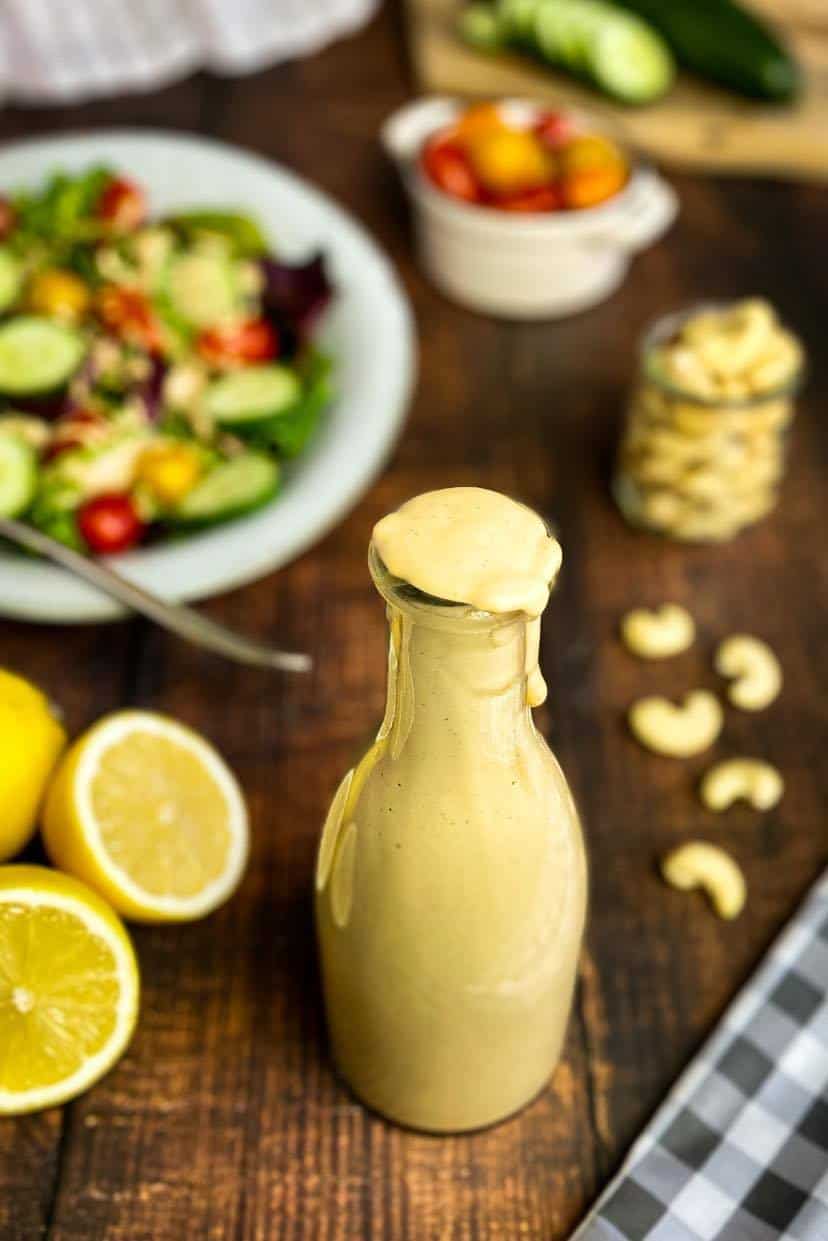
Finding salad dressings that are healthy, vegan, and oil-free can be a real challenge. Thankfully, you can whip up this delicious Creamy Balsamic Dressing in less than 15 minutes. The trick is boiling or soaking the cashews to make them extra rich and creamy. The mix of balsamic vinegar and balsamic glaze gives this dressing a depth of flavor and just the right amount of sweetness.
This easy balsamic vinaigrette is perfect for topping simple salads (like this spinach salad) or roasted veggies. You could also drizzle it over a Buddha Bowl or use it as a veggie dip. Because this dressing is mild, creamy, and sweet, even picky eaters will love it!
Jump to:
You'll love this recipe for Creamy Balsamic Vinaigrette because it's:
- Quick & Easy
- Light & Healthy
- Oil-Free
- Gluten-Free
- Dairy-Free / Lactose-Free
- Vegan
- Versatile
- A Delicious Homemade Salad Dressing!
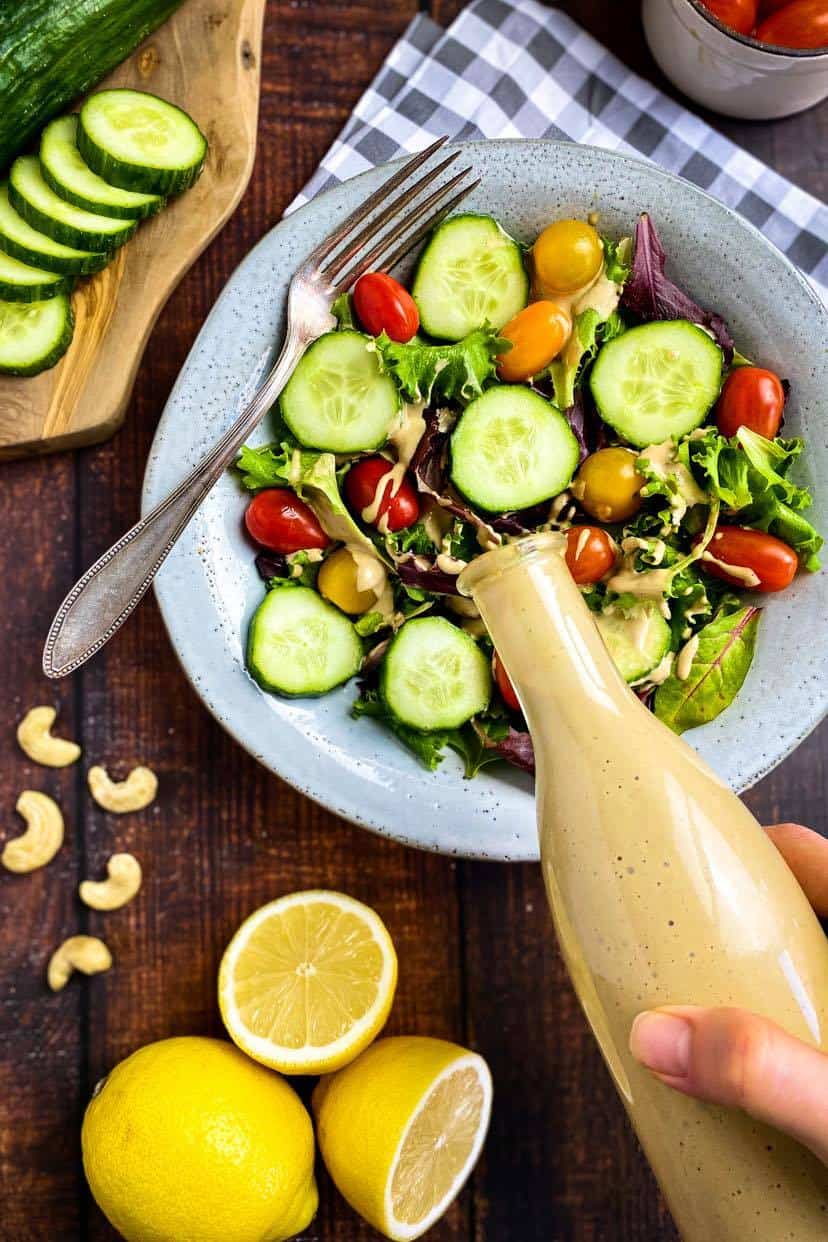
What's the Difference between Balsamic Vinegar and Balsamic Glaze?
Balsamic Vinegar traditionally comes from Modena, Italy, and is made from unfermented grape juice (or must) that's aged in barrels for up to 12 years. This variety is normally quite expensive, but you can buy the more affordable variety, which uses vinegar and grape must, at any grocery store.
Balsamic Glaze or Balsamic Reduction is balsamic vinegar that has been reduced and (sometimes) sweetened. If you are avoiding refined white sugar, be sure to check the label because many varieties contain added sugar. When I lived in the US, I used to love using this Balsamic Glaze from Trader Joe's.
You also can make your own Balsamic Glaze at home by simply bringing 1 cup of balsamic vinegar (plus optional sweetener like maple syrup) to a boil and stirring until thickened and reduced.
What do Balsamic Vinegar and Balsamic Glaze Taste like?
Both balsamic vinegar and balsamic glaze have a deep, complex flavor that mixes the sharp acidity of the vinegar with the sweetness of the grape juice. The main difference between the two is the glaze is more concentrated and can be drizzled over food as a garnish.
Balsamic is especially nice when paired with tomatoes, like this recipe for Cherry Tomato & Basil Linguine. I also use it to deepen the flavor of my Quick Homemade Marina Sauce, which makes a 20-minute sauce taste like it's been simmering for hours. Balsamic also tastes wonderful paired with dijon mustard and/or maple syrup for roasting vegetables, such as these Balsamic Roasted Brussels Sprouts.
How to make this nut-free
For a Nut-Free version of this balsamic dressing recipe, try substituting sunflower seeds for the cashews (as an added bonus, this would make it even more budget-friendly). Or you can use silken tofu or vegan Greek-style yogurt. (Though you will probably need to reduce the amount of added water in both of these variations.) Let me know in the comments if you try any of these substitutions.
Ingredients
- raw, unsalted cashews -- Cashews are going to add the rich creaminess that makes this dressing so delicious.
- water --To help get your dressing to the right consistency.
- nutritional yeast -- This will up the creaminess but add a touch of earthiness that helps balance everything out.
- balsamic glaze -- The bulk of the flavor in this dressing will come from the deep, flavorful, and lightly sweet glaze.
- balsamic vinegar -- Lighter and more acidic than the glaze, this will enhance the balsamic flavor without making the dressing overly sweet.
- lemon juice -- For just a touch more acidity and brightness.
- dijon mustard -- For a touch of flavor and that sharp dijon kick.
- dried oregano and dried basil -- For more Italian flavor.
- granulated garlic --Because everything should have garlic! Feel Free to substitute with 2 to 3 cloves of garlic if you prefer fresh.
- sea salt and fresh cracked pepper
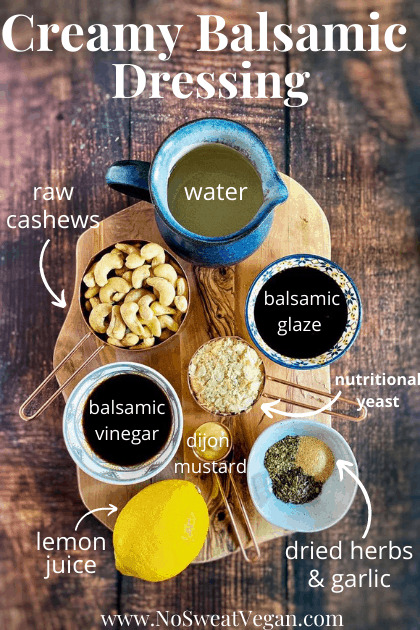
Instructions
For this simple homemade dressing, you just need to boil the cashews for 10 minutes. (Or soak them overnight). Then add everything to a high-speed blender and blitz until smooth.
Be sure to taste to adjust seasonings. If you prefer a thinner consistency, simply add another tablespoon or two of water and blend again. Should you accidentally make the dressing too thin, you can add a little more nutritional yeast to thicken it up.
How to Store
You can store this dressing in a jar or airtight container in the refrigerator for up to 5 days. Be sure to give the dressing a quick shake or stir. If the dressing dries out a little, just add another teaspoon or 2 of water and stir to combine before serving.
If you want to keep the dressing longer, you can freeze it in an airtight jar or container for up to three months. For easy single servings, freeze the dressing in an ice cube try. Remove the frozen dressing cubes from the tray and store in a container or freezer bag for up to 3 months.
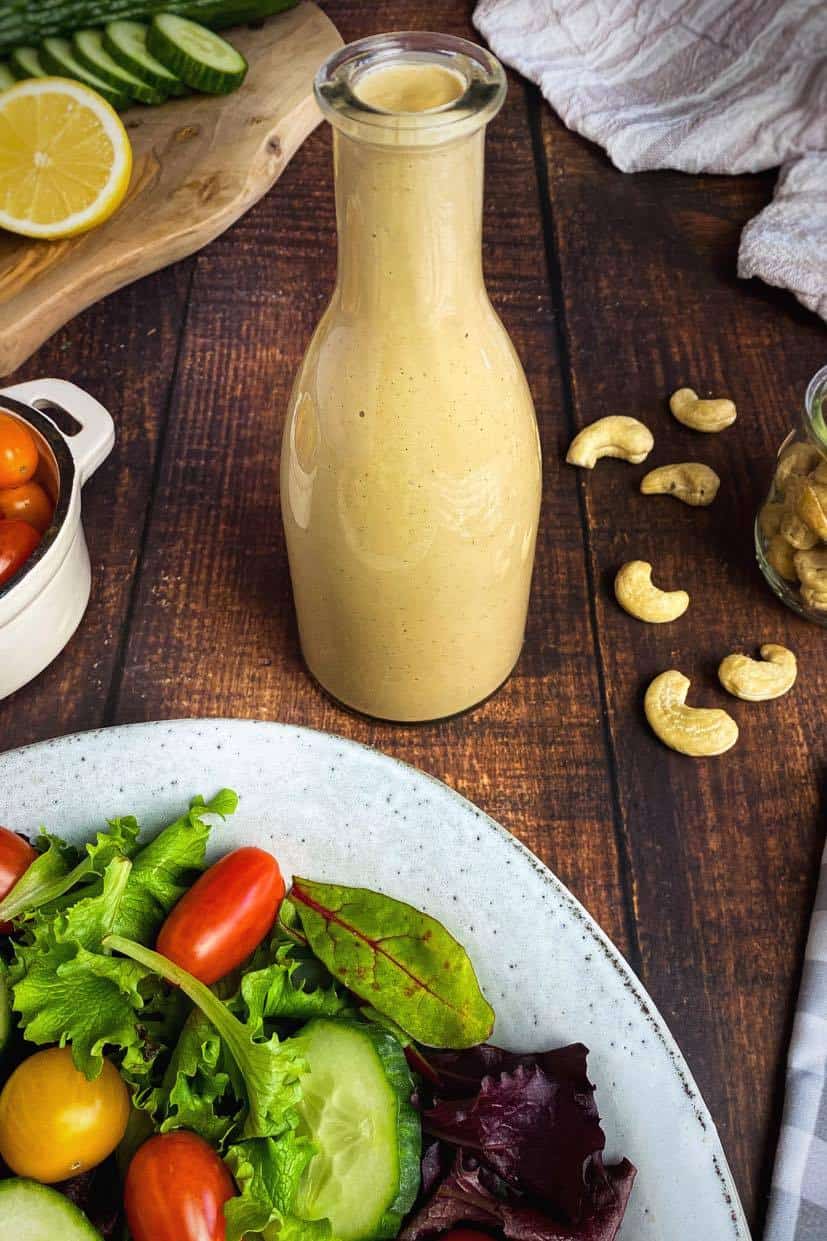
Related recipes
- Spinach, Strawberry, & Avocado Salad
- Creamy Vegan Italian Dressing
- Cilantro Lime Avocado Dressing
- Vegan Italian Chopped Salad
- Southwestern Salad with Chili-Lime Tofu Nuggets
📖 Recipe
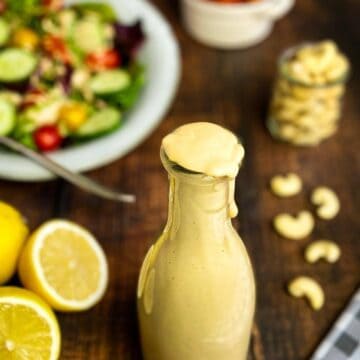
Creamy Balsamic Dressing (Vegan & Oil-Free)
Equipment
Ingredients
- 1 cup raw, unsalted cashews
- ¾ cup water
- ⅓ cup nutritional yeast
- 4 tablespoon balsamic glaze
- 2 tablespoon balsamic vinegar
- 2 teaspoon lemon juice
- 1 teaspoon dijon mustard
- 1 teaspoon dried oregano
- 1 teaspoon dried basil
- ½ teaspoon granulated garlic
- ½ teaspoon sea salt (optional)
- fresh cracked pepper
Instructions
- Add the cashews to a pot with water and bring to a boil. Boil for 10 minutes. Drain the cashews.
- Add the cashews, ¾ cup water, and all of the other ingredients to a high-speed blender. Blend to combine.
- Taste and adjust the seasonings if necessary. For a thinner consistency, add 1 to 2 tablespoons of water and blend again.
- Serve right away. Save any leftovers in an airtight container in the refrigerator for up to 5 days or in the freezer for up to 3 months.
Nutrition
Want access to my Exclusive Meal Planning Tips & Printables page?


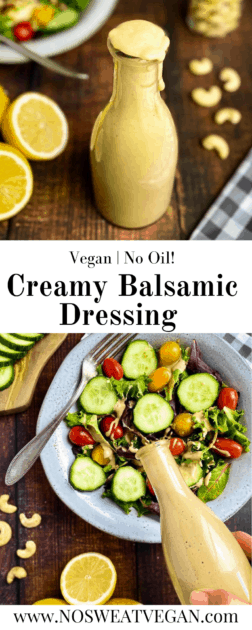


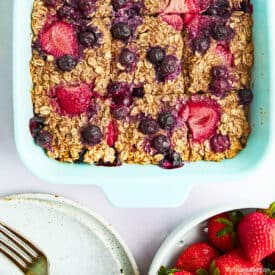
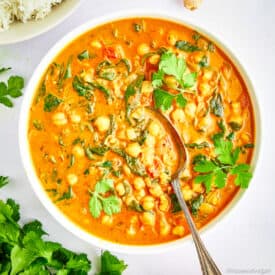
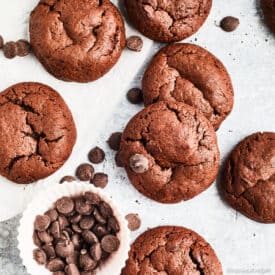
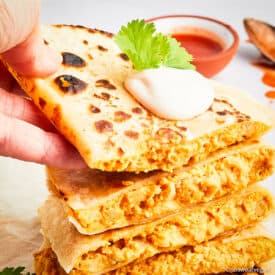
Leave a Reply